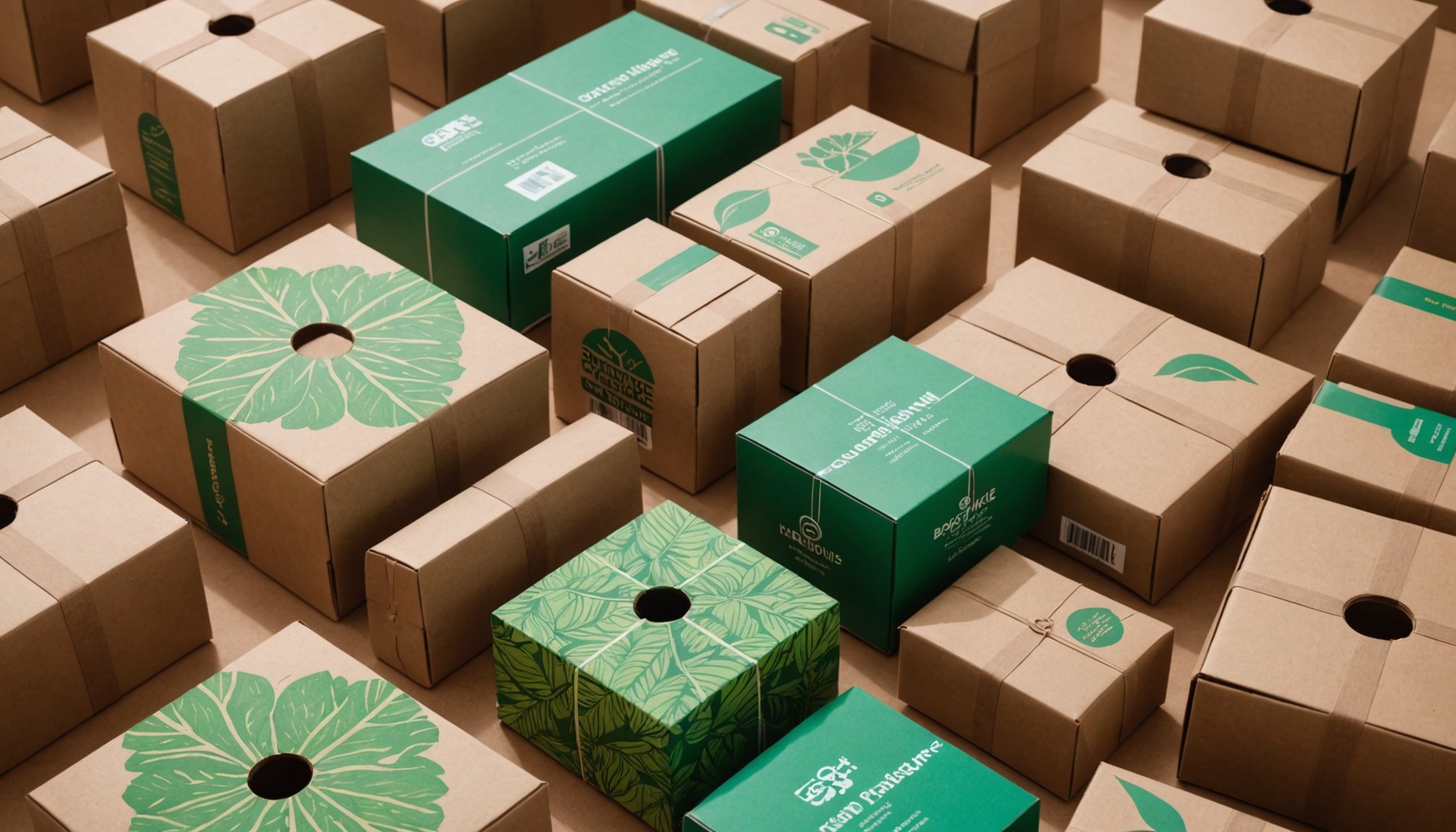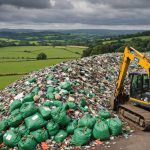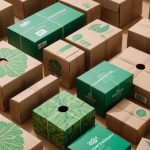Unveiling the Latest Breakthroughs in Sustainable Packaging Solutions for UK Consumer Products
In the UK, the push for sustainability is transforming the packaging industry in profound ways. As consumers become increasingly environmentally conscious, companies are scrambling to adapt and innovate. Here’s a deep dive into the latest breakthroughs in sustainable packaging solutions, and what they mean for the future of consumer products.
The Rise of Sustainable Packaging
The demand for sustainable packaging is driven by a combination of factors, including rising environmental awareness, government initiatives, and changing consumer behaviors. According to Future Market Insights, the global biodegradable packaging market is set to reach USD 352.73 billion by 2034, fueled by these trends[1].
Also to discover : Essential tactics for uk event planners to effortlessly integrate virtual and hybrid experiences
Government Initiatives and Consumer Demand
Government initiatives such as the deposit system in Ireland and India’s National Mission on Sustainable Packaging are setting the stage for a global shift towards sustainable packaging. These regulations are not only driving demand but also encouraging innovation within the industry. For instance, the UK’s Extended Producer Responsibility (EPR) policy aims to make producers more accountable for the waste generated by their products, prompting companies to rethink their packaging strategies.
Innovations in Materials
The industry is witnessing a significant transformation in packaging materials. Biopolymers derived from plant sources, recycled paper, and biocomposites are becoming increasingly popular. Companies are exploring new biodegradable materials to overcome the challenges posed by the high cost of raw materials. For example, the Scottish startup HUID is set to launch a unique alternative to plastic made from onion peels, promising an innovative solution to plastic pollution by 2025[1].
This might interest you : Proven tactics for uk retailers to reduce product returns effectively
Emerging Trends in Sustainable Packaging
Several trends are shaping the future of sustainable packaging, each offering unique benefits and challenges.
Integration of Smart Packaging
The adoption of smart packaging technologies, such as QR codes and environmental sensors, is on the rise. These technologies enhance user engagement and provide consumers with information on the sustainability and recyclability of products. Google’s recent funding of S.Lab, a Ukrainian startup specializing in sustainable packaging, highlights the growing interest in integrating AI to improve sustainability[1].
Collaboration and Partnerships
There is a growing number of collaborations between packaging manufacturers, material developers, and technology companies. These partnerships aim to create innovative and effective biodegradable packaging solutions. For instance, the partnership between CMA CGM and Suez to produce biomethane in Europe is a significant step towards reducing carbon emissions in the maritime industry[2].
Focus on Reusability
There is an increasing emphasis on reusable packaging solutions that complement biodegradable options. Companies are exploring systems that encourage consumers to return packaging for reuse, further enhancing sustainability. This approach aligns with the circular economy model, where resources are kept in use for as long as possible to minimize waste.
Innovative Materials and Technologies
The innovation in sustainable packaging goes beyond traditional solutions, incorporating a wide range of new materials and technologies.
Biodegradable Materials
- Plant-based Polymers: Derived from renewable resources such as corn starch, sugarcane, or potato starch, these polymers offer a biodegradable alternative to traditional plastics.
- Recycled Paper: Companies are using recycled paper to create packaging that is both biodegradable and recyclable.
- Biocomposites: Made from a combination of biopolymers and natural fibers, biocomposites provide strength and durability while being environmentally friendly.
Smart Packaging Technologies
- QR Codes: These codes provide consumers with detailed information about the product, including its environmental impact and recycling instructions.
- Environmental Sensors: These sensors can monitor the condition of the product and provide real-time data on its freshness and safety.
Practical Insights and Actionable Advice
For companies looking to transition to sustainable packaging, here are some practical insights and actionable advice:
Conduct a Life Cycle Assessment
Understand the environmental impact of your packaging from raw material extraction to end-of-life disposal. This will help you identify areas for improvement and make informed decisions.
Engage with Consumers
Educate your consumers about the benefits of sustainable packaging. Use clear labeling and provide information on how to recycle or compost the packaging.
Collaborate with Suppliers
Work closely with your suppliers to source sustainable materials. Collaborations can lead to innovative solutions that benefit both the environment and your business.
Case Studies and Examples
Several companies are already making significant strides in sustainable packaging.
HUID – Onion Peel Packaging
HUID’s innovative use of onion peels to create biodegradable packaging is a prime example of how waste can be turned into a valuable resource. This solution not only reduces plastic waste but also provides a sustainable alternative for packaging food and other consumer products[1].
CMA CGM – Biomethane Production
CMA CGM’s partnership with Suez to produce biomethane is a significant step towards reducing carbon emissions in the maritime industry. This initiative demonstrates how companies can work together to achieve sustainable goals[2].
Market Trends and Future Outlook
The market for sustainable packaging is expected to grow significantly in the coming years, driven by consumer demand and government regulations.
Global Market Trends
| Region | Growth Rate | Key Drivers |
|---|---|---|
| Europe | 8-10% | EU regulations, consumer awareness |
| North America | 7-9% | Extended Producer Responsibility, consumer demand |
| Asia-Pacific | 10-12% | Government initiatives, growing middle class |
| Latin America | 9-11% | Increasing environmental awareness, government policies |
Future Outlook
“The growth of biodegradable packaging reflects strong demand for sustainable solutions, driven by environmentally conscious consumers and government initiatives. Innovations and the integration of smart technologies will shape the future of the market,” says Ismail Sutaria, Principal Packaging Consultant at Future Market Insights (FMI)[1].
The shift towards sustainable packaging is not just a trend; it is a necessity in today’s environmentally conscious world. As consumers, companies, and governments work together, we can expect to see even more innovative solutions emerge. Whether it’s through the use of biodegradable materials, smart packaging technologies, or collaborative partnerships, the future of packaging is set to be more sustainable than ever.
Key Takeaways
- Innovative Materials: Biopolymers, recycled paper, and biocomposites are transforming the packaging industry.
- Smart Packaging: QR codes and environmental sensors are enhancing user engagement and sustainability.
- Collaborations: Partnerships between companies are driving innovation and sustainability.
- Consumer Engagement: Educating consumers about sustainable packaging is crucial for its adoption.
- Government Initiatives: Regulations and policies are driving the demand for sustainable packaging solutions.
As we move forward, it’s clear that sustainable packaging will play a critical role in reducing waste, minimizing environmental impact, and meeting the evolving needs of consumers. The journey towards a more sustainable future is underway, and it’s exciting to see where these innovations will take us.











